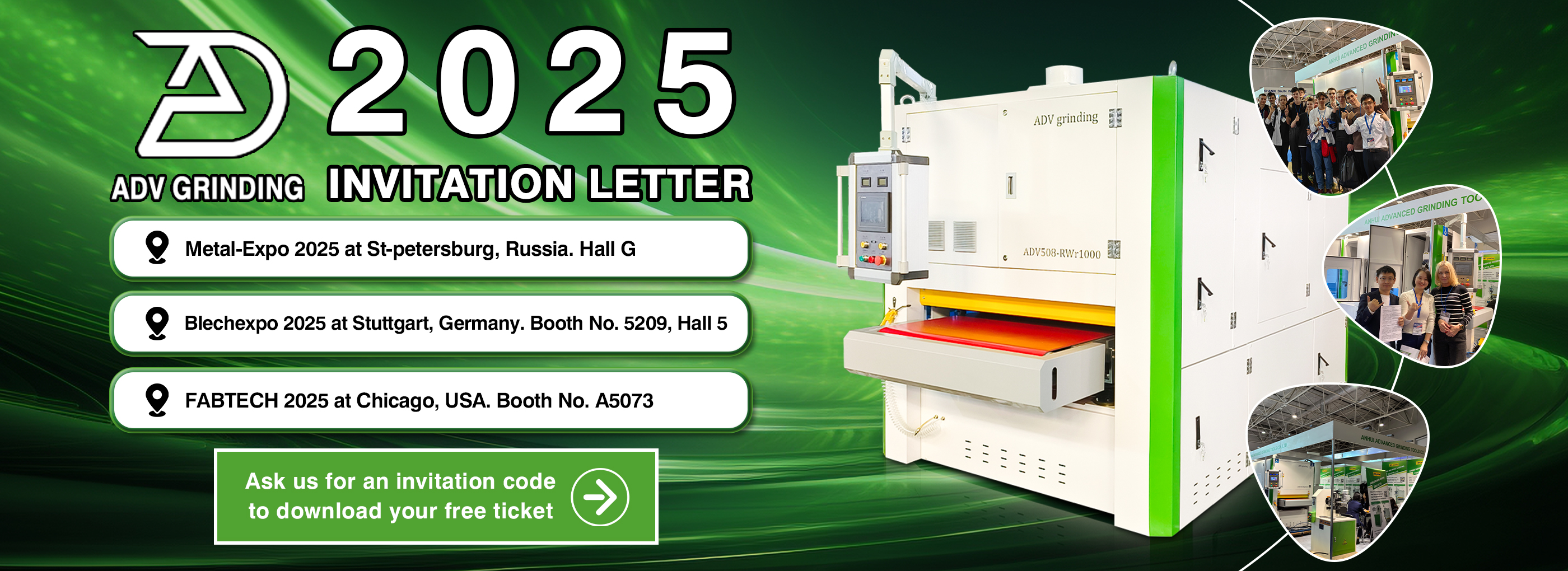
Polishing equipment maintenance is essential to ensure long-term stable operation, extend service life, and maintain optimal performance. The following is a set of systematic maintenance guidelines to help you manage polishing equipment efficiently:
I. Daily maintenance (daily/per shift)
1. Surface cleaning specifications
Use a vacuum cleaner to remove metal chips and dust remaining on the polishing wheel/disc (HEPA-grade filtration is recommended)
Use non-woven fabric and special cleaning agent to wipe the equipment housing to prevent liquid from penetrating into electrical components
Focus on cleaning the coolant pipeline nozzle to ensure that the flow rate is ≥90% of the design value
2. Lubrication management
Check the oil level of the automatic lubrication system (keep more than 80% capacity)
Manual lubrication points use lithium-based grease (NLGI Level 2), the amount of grease injection does not exceed 70% of the cavity volume
Spindle bearing temperature monitoring: continuous working temperature should be ≤75℃ (infrared thermometer detection)
3. Mechanical system inspection
Belt tension detection (recommended to use a tension meter, the deviation is controlled at ±10%)
Transmission component clearance measurement (compare with the standard value in the equipment manual)
Polishing pressure mechanism calibration (error range ±0.5kgf)
II. Periodic maintenance
1. Weekly maintenance items
Check the wear of the motor carbon brush (remaining length <5mm needs to be replaced)
Inverter cooling fan dust removal (compressed air pressure ≤0.3MPa)
Ground resistance test (<4Ω is qualified)
2. Monthly deep maintenance
Spindle dynamic balance check (vibration value ≤2.8mm/s RMS)
Guide rail straightness detection (laser interferometer measurement, tolerance 0.02mm/m)
Cooling system efficiency test (flow meter + temperature sensor monitoring)
3. Annual overhaul
Servo motor encoder calibration (using a dedicated calibrator)
Control system firmware upgrade (manufacturer authorization required)
Safety interlock device comprehensive test (response time ≤ 0.5s)
III. Key component life management
Component name Recommended replacement cycle Performance degradation index
Polishing wheel 200-300 hours Surface hardness decrease > 15%
Spindle bearing 8000 hours Vibration spectrum abnormality > 3dB
Belt drive system 5000 hours Elongation > 3%
Filter cotton core 150 hours Pressure difference > 200Pa
IV. Application of intelligent maintenance technology
Install vibration monitoring sensor (recommended sampling rate ≥ 10kHz)
Implement temperature trend analysis system (set three-level alarm threshold)
Establish digital maintenance archive (recommended to use CMMS system)
Apply AR remote diagnosis technology (requires 5G network support)
V. Environmental control standards
Working temperature: 15-35℃ (temperature change rate <5℃/h)
Relative humidity: 30-60%RH (no condensation)
Air cleanliness: ISO 14644-1 Class 7
Power quality: voltage fluctuation ≤±10%, THD <5%
VI. Fault diagnosis process
Uneven polishing troubleshooting
Check the flatness of the workpiece fixture (≤0.01mm)
Verify the polishing agent concentration (refractometer measurement)
Detect the radial runout of the spindle (≤0.005mm)
Abnormal noise processing
Spectrum analysis to determine the frequency characteristics
Check the coupling alignment (deviation <0.05mm)
Lubricant contamination detection (NAS 1638 standard)
VII. Performance optimization suggestions
Adopt adaptive control system (integrated PID + fuzzy control algorithm)
Upgrade high-precision linear motor drive (positioning accuracy ±0.001mm)
Implement energy recovery system (can save 15-20% energy)
Apply digital twin technology for process simulation
Through strict implementation of this maintenance plan, the mean time between failures (MTBF) of the equipment can be increased by 40-60%, and the overall efficiency (OEE) can be increased by 15-25%. It is recommended to establish a maintenance KPI system, including:
Planned maintenance execution rate ≥95%
Emergency maintenance ratio ≤10%
Spare parts inventory turnover rate 3-5 times/year
Equipment comprehensive utilization rate ≥85%
Note: The specific parameters need to be adjusted according to the equipment model, working load and manufacturer's recommendations. It is recommended to review and optimize the maintenance plan every quarter.
MORE Sheet Metal Processing Machinery >>>


